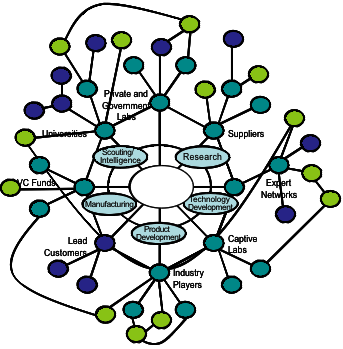Why Your Next Crypto Move Should Involve a Web3 Wallet Like okx
So, I was fiddling with some crypto apps the other day, and wow—there’s just this wild gap between what most wallets promise and what they actually deliver. Seriously? Managing NFTs, diving into DeFi, and keeping everything user-friendly feels like juggling flaming swords. Something felt off about many solutions out there, almost like they were designed by coders who forgot real users exist. Here’s the thing: if you’re browsing for browser extensions to interact with Web3 seamlessly, you deserve better than clunky interfaces and constant security jitters.
At first glance, I thought, “Okay, wallets are wallets, right? Just storage for your crypto stuff.” But the deeper I dug, the more I realized that modern wallets are way more than digital piggy banks—they’re gateways to a whole decentralized universe. And honestly, not every wallet gets that. Some still act like relics from the early crypto days, stuck in their own outdated ways. On the other hand, you’ve got extensions like okx that really push the envelope. They’re not just about holding assets; they’re about *living* in Web3—whether that’s trading, staking, or simply showing off your latest NFT.
Really, the NFT craze has changed the game completely. At first, I rolled my eyes at all the hype. But then, I stumbled upon this one project where owning an NFT gave you access to exclusive events and perks. Hmm… that’s when my intuitive lens cracked open a bit. NFTs aren’t just pictures on the blockchain; they’re membership cards, keys, and sometimes even passports. So naturally, a wallet that supports this NFT magic without making me jump through hoops is very very important.
Of course, integrating DeFi adds another layer of complexity. I’m biased, but DeFi’s potential to democratize finance is huge. Still, I can’t stand when interfaces make you feel like you need a PhD just to swap tokens or provide liquidity. It’s frustrating. Wallets that embed DeFi functions natively, letting users interact with protocols without switching apps, are honestly lifesavers.
Okay, so check this out—some wallets try to do it all but end up doing nothing well. Meanwhile, okx manages to keep things sleek and intuitive, while still supporting complex interactions. The balance isn’t easy to strike, but when it’s right, you barely notice the tech behind the scenes.

What Makes a Web3 Wallet Truly Stand Out?
Honestly? It’s the little things. At first, I thought speed was king, but then realized security and usability trump raw performance any day. Imagine rushing through a trade only to realize your wallet doesn’t alert you about shady contract approvals. Yikes. So, wallets need to be smart—not just fast.
Plus, browser extension wallets have to fit seamlessly into your daily browsing routine. I mean, who wants to switch context constantly? Some wallets feel like awkward third wheels, while others integrate so smoothly you forget they’re even there. The okx wallet, for instance, does a great job embedding itself naturally into your browser, making interactions with DeFi protocols and NFT marketplaces feel as easy as checking your email.
Here’s what bugs me about many options: they often lack solid NFT support or make DeFi interactions clunky. Not with okx, though. It supports a wide array of NFT standards, letting you view, send, and receive tokens without jumping through hoops. Plus, its DeFi integration is pretty darn tight, offering direct access to swaps, staking, and liquidity pools within the extension itself.
On one hand, these features sound simple, right? But actually, the underlying tech to make all this work reliably is super complex. On the other hand, users just want a smooth experience. Though actually, the magic lies in balancing those two perfectly. This balance is exactly why I keep coming back to okx as my go-to wallet.
And, oh—by the way, the wallet’s open-source roots and active community support make it feel more trustworthy than some closed-off alternatives. Transparency in crypto isn’t just a buzzword; it’s a must-have. I trust the wallet more knowing that its code and development are open to public scrutiny.
Personal Experience: Where Convenience Meets Power
I’ll be honest, I’m not 100% sure I’d have stuck with crypto this long if my wallet was a pain to use. A few months back, I tried juggling multiple wallets just to manage different tokens and NFTs, and honestly, it was a nightmare. Switching tabs, logging in and out, risking private keys—all that stress added up fast.
Then I found myself using okx for a weekend project. It was such a relief to have everything under one roof: NFT viewing, quick swaps, and even DeFi staking. My instinct said, “This is the real deal.” Plus, the extension’s UI is clean without feeling sterile, which is a rare feat.
Something else I noticed is how the wallet handles network switching. It’s super smooth, especially if you’re into experimenting across different blockchains. That flexibility is crucial for anyone dipping toes into various DeFi pools or NFT marketplaces.
Still, not everything’s perfect. Sometimes the notifications lag a bit or the gas fee estimations aren’t spot-on. But hey, these small hiccups don’t overshadow how much easier my crypto life became. Actually, wait—let me rephrase that—these minor flaws feel like growing pains in an otherwise solid product.
Whoa! Imagine if every wallet felt this accessible and robust. The barrier to entry for newcomers would drop drastically, and that’s exactly what the crypto world needs right now.
Why Browser Extensions Are the Future for Web3 Interaction
Browser extensions have this unique advantage of being instantly available and context-aware. Unlike standalone apps, they can nudge you right at the moment you want to interact with a DApp or NFT marketplace. This immediacy cuts down friction tremendously, which is very very important for user adoption.
At the same time, security concerns loom large. Extensions can be targets for phishing or malicious scripts. My gut feeling tells me that wallets like okx, which prioritize security through advanced cryptographic safeguards and prompt user alerts, are setting new standards.
Something else worth noting: the ability to customize permissions for each DApp interaction without overwhelming the user is a subtle but powerful feature. I’ve seen wallets that either bombard you with endless pop-ups or just blindly approve everything. Neither is good. Here, the balance is tricky but crucial.
One last thought before I wrap this up—if you’re a browser user actively exploring Web3, hunting for a wallet that combines NFT support, DeFi integration, and smooth browser synergy, you really should give okx a shot. It’s not perfect, but it’s probably the most promising tool I’ve encountered lately.
And who knows? Maybe next time we chat, the wallet landscape will have evolved even more. But for now, this feels like the sweet spot between power and ease.
Frequently Asked Questions About Web3 Wallets
What exactly is a Web3 wallet, and how does it differ from traditional crypto wallets?
A Web3 wallet acts as your key to the decentralized internet, not just storing crypto but also enabling direct interactions with smart contracts, DeFi platforms, and NFT marketplaces. Unlike traditional wallets, they often come as browser extensions or mobile apps designed for seamless Web3 integration.
Does okx support all major NFT standards?
Yes, okx supports popular NFT standards like ERC-721 and ERC-1155, allowing users to manage various NFT types directly within the wallet without needing external tools.
Is it safe to use browser extension wallets like okx for DeFi activities?
While no digital tool is risk-free, okx incorporates strong security measures such as encrypted key storage and transaction approval prompts to mitigate risks. Users should always stay vigilant and only connect to trusted DApps.


